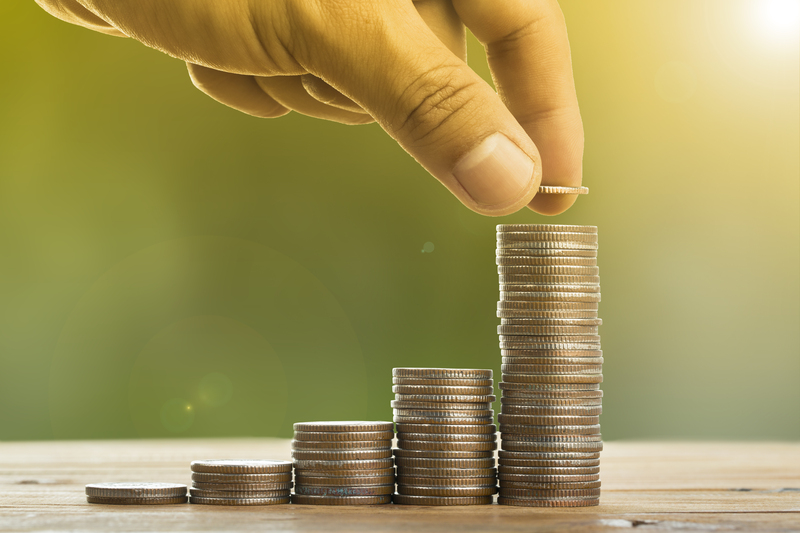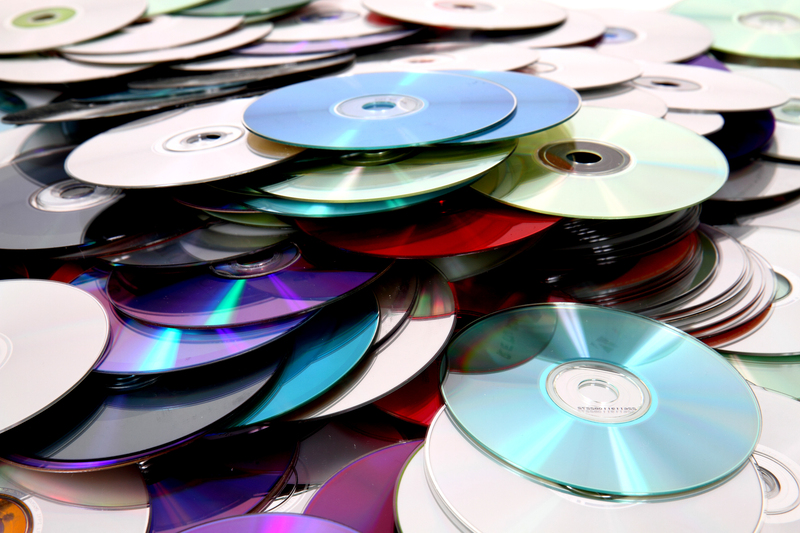Mastering the Art of Packaging and Cardboard Disposal
Cardboard packaging has become an essential part of our everyday lives, playing a crucial role in everything from e-commerce deliveries to moving houses. However, with the growing emphasis on sustainability, understanding the art of effective packaging and the responsible techniques for cardboard disposal has never been more important. In this comprehensive guide, we will explore strategies for smart packaging and delve deep into the best practices for environmentally friendly cardboard disposal. Whether you are a business, a frequent online shopper, or a concerned citizen, mastering these skills is vital for a cleaner, greener future.
Understanding Cardboard Packaging: Types and Importance
Before focusing on disposal, it's crucial to understand the types of cardboard packaging and their importance in modern supply chains. Cardboard, typically made from recycled paper, offers a sturdy, lightweight, and cost-effective solution for packing goods.
Main Types of Cardboard Used in Packaging
- Corrugated Cardboard: Used predominantly for shipping boxes and cartons. Recognized by its fluted inner layer, it offers excellent protection.
- Paperboard (Carton Board): Thinner than corrugated, used for cereal boxes, tubes, and lightweight packaging.
- Honeycomb Cardboard: Known for its high strength and light weight, ideal for heavy-duty packaging and furniture.
Packaging designs continue to evolve, catering to the needs of logistics, presentation, and user convenience. Understanding these types helps in choosing the right packaging material for your needs and assists in appropriate disposal later.

Eco-Conscious Packaging: Best Practices
With growing environmental concerns, brands and individuals are moving towards sustainable packaging solutions. Here are some essential eco-friendly packaging tips to lower your environmental impact:
Smart Packaging Strategies
- Reduce Packaging Volume: Use only as much cardboard as necessary to protect products. Avoid excessive padding or oversized boxes.
- Choose Refillable or Recyclable Packaging: Opt for cardboard with high recycled content or packaging that can be reused multiple times.
- Use Minimal Inks and Coatings: Printing with water-based inks and avoiding plastic coatings on cardboard makes recycling easier.
- Innovative Design: Support brands that use innovative folding and locking systems to minimize materials and maximize protection.
Adopting these thoughtful packaging solutions not only reduces waste but also positions you as a responsible consumer or business in an increasingly eco-conscious society.
The Art of Efficient Cardboard Recycling
Cardboard recycling plays a vital role in the cycle of sustainable waste management. It helps conserve resources, reduce landfill contributions, and cut down on pollution. Let's examine how to master the techniques of cardboard disposal and recycling for both homes and businesses.
Step-by-Step Guide to Responsible Cardboard Disposal
- Collect and Separate: Gather all your cardboard packaging. Separate clean cardboard from greasy or contaminated pieces (such as pizza boxes).
- Remove Contaminants: Take out all non-cardboard materials - plastic tape, bubble wrap, Styrofoam, and shipping labels. Contaminants can clog recycling processes.
- Flatten the Boxes: Breaking down boxes saves space and makes transportation and processing much easier.
- Keep It Dry: Wet cardboard can break down and become unsuitable for recycling. Store flattened boxes in a dry area until pickup or drop-off.
- Dispose Responsibly: Place cardboard in your designated recycling bin or take it to a local recycling center. Larger loads may require a scheduled bulk pickup.
Note: Cardboard contaminated with food or oil usually cannot be recycled and should be disposed of as regular waste, or composted where appropriate.
Enhancing your Recycling Impact
- Check Local Guidelines: Some recycling centers have specific rules about bundled cardboard or mixed materials. Always check with your municipality.
- Participate in Community Programs: Join cardboard recycling drives and collaborate with local environmental groups for larger impact.
- Educate Others: Share your knowledge about responsible packaging and cardboard management with friends and family to multiply environmental benefits.
Alternatives to Recycling: Creative Cardboard Reuse
While recycling is the go-to method for cardboard disposal, creative reuse offers practical and rewarding alternatives. Repurposing cardboard can be fun, cost-effective, and environmentally friendly.
Ingenious Ways to Reuse Cardboard
- DIY Storage Solutions: Transform boxes into shelf organizers, filing systems, and magazine holders.
- Gardening Projects: Use sheets of cardboard as weed barriers or compost material. Cardboard breaks down naturally and nourishes the soil.
- Art and Craft Initiatives: Encourage kids (or adults!) to use cardboard for homemade puzzles, models, or creative building blocks.
- Moving and Donations: Offer used boxes to people planning a move or donate to local businesses and charities.
By giving cardboard a second life, you extend its usefulness and delay its entry into the waste stream. This not only benefits the environment but also fosters innovation and resourcefulness.
The Environmental Impact of Cardboard Waste
Why is mastering cardboard disposal critical? Each year, millions of tons of cardboard end up in landfills. While cardboard is biodegradable, excessive accumulation strains landfills and releases methane, a potent greenhouse gas, if it decomposes anaerobically.
Key Environmental Benefits of Responsible Disposal
- Resource Conservation: Recycling cardboard reduces the need for raw materials and conserves trees, energy, and water.
- Reduction in Greenhouse Gases: Diverting cardboard from landfills minimizes methane emissions and lessens the carbon footprint.
- Cutting Down Waste: Effective disposal practices keep neighborhoods clean and support circular economies.
The journey towards sustainability starts with everyday actions - every box recycled matters!
Packing and Shipping Tips for Reduced Waste
Whether managing a business or shipping personal items, smart packaging can significantly cut waste and streamline cardboard waste management.
Efficient Shipping Practices
- Choose the Right Size: Select boxes just large enough to fit contents safely, cutting down excess material and shipping costs.
- Use Eco-Friendly Fillers: Substitute packing peanuts with paper or biodegradable alternatives. Avoid non-recyclable plastics.
- Label Properly: Clear, minimal labels (and less tape) make boxes easier to recycle afterwards.
- Buy Recycled Boxes: Support a circular economy by purchasing boxes made from recycled cardboard.
Smart shipping equals smart disposal. A little pre-planning can make the eventual disposal process seamless and sustainable.
Business and Bulk Cardboard Disposal Solutions
For businesses, especially those in retail, e-commerce, or manufacturing, efficient bulk cardboard disposal is a necessity.
Developing a Cardboard Disposal Strategy
- Create Cardboard Collection Points: Designate accessible areas where staff can deposit used packaging.
- Invest in Balers or Compactors: These machines compress large volumes into manageable bundles for easy pickup, improving workplace safety and efficiency.
- Partner with Recyclers: Establish relationships with local recycling companies. Scheduled pickups ensure timely, responsible disposal.
- Track and Report: Monitor the tonnage you recycle and share progress with staff and clients to encourage further efforts.
Efficient bulk cardboard management not only optimizes disposal but enhances brand reputation as a sustainability leader.
Composting: Another Avenue for Cardboard Disposal
For smaller quantities or food-soiled cardboard, composting is a viable, environmentally friendly option. Cardboard is rich in carbon, making it an excellent "brown" material in compost piles.
How to Compost Cardboard
- Shred or Tear: Break down cardboard into small pieces to aid decomposition.
- Avoid Coated Cardboard: Only compost plain, non-glossy cardboard; coated materials may contain plastics or chemicals.
- Balance Green and Brown: Layer shredded cardboard with food scraps, lawn clippings, and other "green" materials for an effective composting process.
- Maintain: Turn the pile regularly and keep it moist. In time, your cardboard will turn into valuable compost for gardens or landscaping.
Tip: Compostable cardboard includes cereal boxes, egg cartons, and other non-waxed paperboard products.

Educational Resources and Further Reading
Keep learning about advanced packaging techniques and sustainable cardboard waste management through the following resources:
- Local Municipal Websites: Find detailed guides about recycling protocols and landfill regulations in your area.
- Environmental Groups: Organizations like the EPA or Greenpeace often publish in-depth studies on packaging waste and recycling trends.
- Packaging Industry Reports: Stay informed about the latest innovations in cardboard manufacturing and disposal tech.
- Community Workshops: Many cities and towns offer seminars or events on reducing packaging waste and effective recycling.
Conclusion: Embrace the Future of Responsible Packaging
Mastering the art of packaging and cardboard disposal is central to reducing our environmental impact and building a sustainable future. By understanding the many facets of cardboard packaging, adopting smart disposal habits, prioritizing recycling, experimenting with creative reuse, and spreading awareness, each individual and business can make a significant difference.
Let's all commit to thoughtful packaging and responsible cardboard disposal in our communities, workplaces, and homes. Only together can we ensure that the boxes of today become the resources of tomorrow, closing the loop on waste and contributing to a healthier planet for generations to come.
Remember: Every piece of cardboard you reuse, recycle, or compost is a step forward in the journey towards environmental stewardship and waste-free living!


